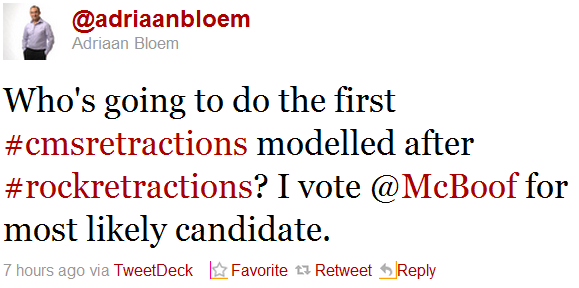LinkedIn today announced Signal, a new feature (currently in beta) that lets members see an activity stream that combines LinkedIn status updates and Twitter posts from other members who have opted-in to the feature. LinkedIn has licensed the Twitter firehose to incorporate all of its members’ tweets into the site, not just tweets with the #in hashtag embedded, as is current practice.
While it is hard to imagine anyone other than corporate and independent talent recruiters will make LinkedIn their primary Twitter client, Signal does have an element that is worthy of emulation by other social networks and enterprise social software providers that incorporate an activity stream (and which of those does not these days!) That feature is role-specific filters.
I wrote previously in this post about the importance of providing filters with which individuals can narrow their activity stream. I also noted that the key is to understand which filters are needed by which roles in an organization. LinkedIn apparently gets this, judging by the screenshot pictured below.
Notice the left-hand column, labeled “Filter by”. LinkedIn has most likely researched a sample of its members to determine which filters would be most useful to them. Given that recruiters are the most frequent users of LinkedIn, the set of filters displayed in the screenshot makes sense. They allow recruiters to see tweets and LinkedIn status updates pertaining to LinkedIn members in specific industries, companies, and geographic regions. Additionally, the Signal stream can be filtered by strength of connection in the LinkedIn network and by post date.
The activity stream of every enterprise social software suite (ESS) should offer such role-based filters, instead of the generic ones they currently employ. Typical ESS filtering parameters include individuals, groups or communities, and workspaces. Some vendors offer the ability to filter by status as a collaborator on an object, such as a specific document or sales opportunity. A few ESS providers allow individuals to create custom filters for their activity stream. While all of these filters are helpful, they do not go far enough in helping individuals narrow the activity stream to view updates needed in a specific work context.
The next logical step will be to create standard sets of role-based filters that can be further customized by the individuals using them. Just as LinkedIn has created a filter set that is useful to recruiters, ESS providers and deploying organizations must work together to create valuable filter sets for employees performing specific jobs and tasks. Doing so will result in increased productivity from, and effectiveness of, any organization’s greatest asset – it’s people.



 ).
).